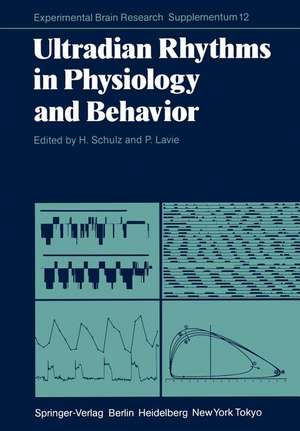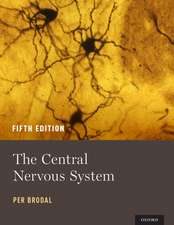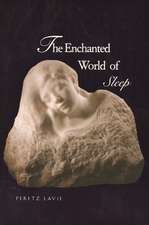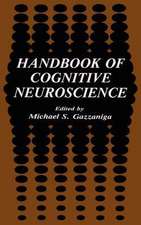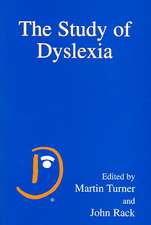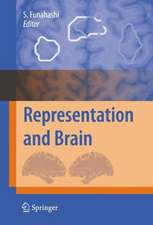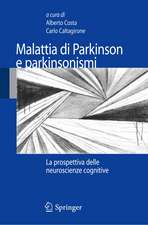Ultradian Rhythms in Physiology and Behavior: Experimental Brain Research Series, cartea 12
Editat de Hartmut Schulz, Peretz Lavieen Limba Engleză Paperback – 6 dec 2011
Din seria Experimental Brain Research Series
-
 Preț: 379.30 lei
Preț: 379.30 lei - 15%
 Preț: 659.53 lei
Preț: 659.53 lei -
 Preț: 392.97 lei
Preț: 392.97 lei - 15%
 Preț: 646.94 lei
Preț: 646.94 lei - 18%
 Preț: 951.47 lei
Preț: 951.47 lei - 15%
 Preț: 650.69 lei
Preț: 650.69 lei - 15%
 Preț: 642.18 lei
Preț: 642.18 lei -
 Preț: 396.02 lei
Preț: 396.02 lei - 15%
 Preț: 652.81 lei
Preț: 652.81 lei - 18%
 Preț: 945.62 lei
Preț: 945.62 lei - 15%
 Preț: 639.08 lei
Preț: 639.08 lei - 5%
 Preț: 726.88 lei
Preț: 726.88 lei -
 Preț: 389.70 lei
Preț: 389.70 lei - 15%
 Preț: 645.60 lei
Preț: 645.60 lei - 5%
 Preț: 708.06 lei
Preț: 708.06 lei - 15%
 Preț: 650.69 lei
Preț: 650.69 lei - 5%
 Preț: 388.31 lei
Preț: 388.31 lei - 5%
 Preț: 377.16 lei
Preț: 377.16 lei - 15%
 Preț: 648.89 lei
Preț: 648.89 lei - 5%
 Preț: 718.46 lei
Preț: 718.46 lei - 5%
 Preț: 1119.47 lei
Preț: 1119.47 lei - 15%
 Preț: 643.48 lei
Preț: 643.48 lei - 15%
 Preț: 642.36 lei
Preț: 642.36 lei - 15%
 Preț: 652.81 lei
Preț: 652.81 lei
Preț: 1385.37 lei
Preț vechi: 1689.48 lei
-18% Nou
Puncte Express: 2078
Preț estimativ în valută:
265.09€ • 277.48$ • 220.64£
265.09€ • 277.48$ • 220.64£
Carte tipărită la comandă
Livrare economică 31 martie-14 aprilie
Preluare comenzi: 021 569.72.76
Specificații
ISBN-13: 9783642704857
ISBN-10: 3642704859
Pagini: 356
Ilustrații: X, 340 p.
Dimensiuni: 170 x 244 x 19 mm
Greutate: 0.57 kg
Ediția:Softcover reprint of the original 1st ed. 1985
Editura: Springer Berlin, Heidelberg
Colecția Springer
Seria Experimental Brain Research Series
Locul publicării:Berlin, Heidelberg, Germany
ISBN-10: 3642704859
Pagini: 356
Ilustrații: X, 340 p.
Dimensiuni: 170 x 244 x 19 mm
Greutate: 0.57 kg
Ediția:Softcover reprint of the original 1st ed. 1985
Editura: Springer Berlin, Heidelberg
Colecția Springer
Seria Experimental Brain Research Series
Locul publicării:Berlin, Heidelberg, Germany
Public țintă
ResearchCuprins
Introductory Note.- Section 1 Ultradian Rhythms in Physiology and Endocrinology.- Ultradian Rhythms in Behavior: The Case of the Common Vole (Microtus Arvalis).- The Circhoral Gonadotropin Releasing Hormone (GnRH) Pulse Generator of the Hypothalamus and Its Physiological Significance.- Pulsatility of Pituitary Hormones.- Relationship Between Ultradian Rhythms of the Sleep-Wakefulness Cycle and Growth Hormone and Corticosterone Secretion in Rats.- Ultradian Rhythms in Locomotor Activity, Deep Body Temperature and Plasma Corticosterone Levels in Rats: Two Different Origins?.- Interaction Between Circadian and Ultradian Rhythms of Spontaneous Locomotor Activity in Rats During the Early Developmental Period.- Urinary Ultradian Rhythms in Dogs.- Timing Function of the Dorsal Raphe Nucleus and the Temporal Organization of the Ultradian Sleep Cycle.- Section 2 Sleep and Waking Rhythms.- Ultradian Rhythms: Gates of Sleep and Wakefulness.- Ultradian Rhythms in the Nychthemeron of Narcoleptic Patients and Normal Subjects.- The Basic Rest-Activity Cycle Revisited: Some New Perspectives.- Ultradian Rhythms During Sustained Performance.- Three Central Issues Concerning Ultradian Rhythms.- Ultradian Components of Human Sleep/Wake Patterns During Disentrainment.- Section 3 Methods and Models.- Sleep Cycles as a Basic Unit of Sleep.- In Search of REM Cycle in Short Sleep Record: Iterative Nonorthogonal r2 Method.- The REM Sleep Ultradian Rhythm: A Limit Cycle Mathematical Model.- Modes of Interaction Between Ultradian and Circadian Rhythms: Toward a Mathematical Model of Sleep.- Epilogue.- On Diversity and Uniformity of Ultradian Rhythms.
